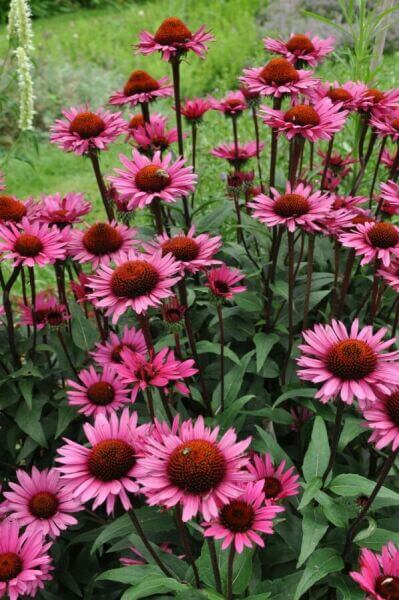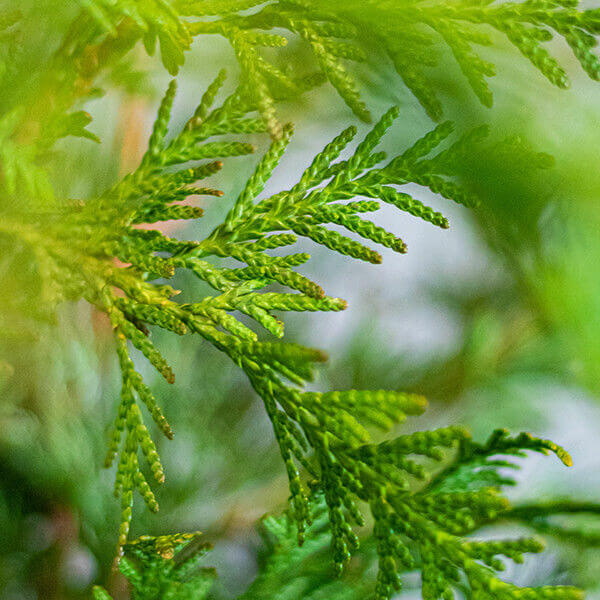Best Hedging Plants For Decorative Hedges
Improve your garden's allure with rich hedge ranges such as Yew (Taxus), Thuja, Laurel, Photinia, and Bamboo, celebrated for their structural stability and environmental advantages.
Yew and Thuja provide evergreen protection and winter season durability, while Laurel uses rapid growth and broad, aromatic leaves.
Photinia adds seasonal appeal with its vibrant red foliage, and Bamboo lends a low-maintenance, tranquil atmosphere.
These hedges improve air quality, minimize sound, and create tranquil, private areas.
Correct planting, spacing, and maintenance guarantee energetic growth and environmental consistency.
Explore how these lush ranges can raise your garden's appeal and well-being.
Key Takeaways
Transform Your Garden With Lush Hedge Ranges
- Select Yew for its thick, evergreen development and unparalleled longevity.
- Go with Laurel for its quick growth and broad leaves, ensuring quick privacy.
- Select Photinia for its dynamic seasonal foliage, which turns a striking dark red.
- Make use of Bamboo for a low-maintenance, winter-hardy hedge with visual appeal.
- Space plants 2-3 per meter and prune regularly for optimal growth and health.
Popular Hedge Plants
When transforming a garden with rich hedge varieties, it's important to think about popular hedge plants such as Yew, Thuja, Laurel, and Photinia due to their special attributes and advantages.
Yew (Taxus) is extremely respected for its durability and dense, green growth, making it a prime choice for withstanding landscapes.
Thuja is noted for its evergreen foliage and robust winter resilience.
Photinia adds seasonal vibrancy with red leaves that darken over time, creating vibrant visual appeal.
Laurel uses quick development and fragrant, broad leaves, suitable for quick privacy.
In Addition, Bamboo is an exceptional option for atmosphere, providing a low-maintenance, winter-hardy option that enhances the garden's visual with its classy, swaying walking sticks.
These selections cater to a variety of horticultural requirements and preferences.
Benefits of Garden Hedges
Garden hedges use a plethora of advantages, making them a valuable addition to any landscape. These natural barriers are cost-effective to carry out and offer significant wind defense, boosting air flow and adding to sound reduction. The thick foliage of hedges like Thuja and Beech guarantees privacy by blocking visibility, developing a peaceful and secluded environment.
Hedges likewise play an important role in microclimate guideline, offering a stable environment that cultivates plant growth and decreases temperature fluctuations. Their complex leaf structures filter pollutants, enhancing air quality and contributing to a much healthier garden community.
Additionally, hedges excel in sound reduction, taking in and deflecting sound waves to lower ambient noise levels. This double functionality of offering both visual and acoustic personal privacy boosts the overall harmony and aesthetic appeal of any garden.
Planting and Maintenance Tips
For an effective hedge, meticulous preparation of the planting area is vital. Ensure the soil has appropriate pH and drain to support strong root development.
Space the plants properly for the picked species. Water the hedge often throughout its preliminary development phase, adjusting as required with seasonal modifications.
Implement a systematic insect control and illness avoidance strategy, using chemical or natural treatments when essential. Regularly inspect for aphids, mites, and fungal infections.
Apply mulch to keep wetness and reduce weeds. Seasonal pruning promotes thick development and air blood circulation, essential for plant health.
Following these guidelines will assist you cultivate a lively, properly maintained hedge that boosts the beauty of your garden.
Spacing and Cutting Standards
Spacing and Cutting Standards
Correct spacing and cutting are crucial for cultivating healthy, visually appealing hedges. Adequate spacing ensures each plant receives sufficient nutrients, light, and airflow.
Follow these guidelines for optimal hedge maintenance:
- Spacing: Position hedge plants 2-3 plants per meter to motivate robust development.
- Pruning Strategies: Routine pruning is vital for keeping preferred hedge height and shape. Cut new growth in summer and cut back older wood throughout winter season.
- Seasonal Care: Change cutting schedules and approaches according to seasonal requirements to guarantee plant health.
- Hedge Height: Regularly monitor and cut to keep the preferred hedge height and accomplish uniform aesthetics.
Sticking to these steps will guarantee your hedge grows, improving both the appeal and functionality of your garden.
Picking the Right Hedge
Picking the Right Hedge
Choosing the appropriate hedge includes assessing factors such as fully grown height, foliage density, and environmental resilience. Effective hedge plant selection needs comprehending each species' growth qualities and site-specific versatility.
For example, Yew (Taxus) uses outstanding durability and thick growth, while Thuja is noteworthy for its winter strength. Furthermore, thinking about maintenance requirements is vital; fast-growing species like Laurel or Privet need regular cutting, whereas low-maintenance options like Bamboo or Ivy may be more suitable for those looking for minimal maintenance.
Environmental elements such as soil type, light availability, and moisture conditions need to also assist the selection process. This mindful approach guarantees the chosen hedges will flourish, supplying both practical and aesthetic benefits to the garden landscape.
Shipment and Planting Advice
To ensure your hedge plants prosper, they should be delivered by specialized carriers and planted without delay upon arrival.
Follow these important actions for effective planting:
- Soil Preparation: Improve the soil with raw material to improve drain and nutrient material.
- Planting Depth: Develop a trench twice the width and equal to the depth of the root ball.
- Watering Methods: Water completely after planting, keeping the soil regularly wet however not saturated.
- Mulching: Apply a layer of mulch to keep wetness and reduce weeds.
Consumer Assistance and Service
Given the crucial role of timely support in horticultural pursuits, our client support team is offered 6 days a week through telephone, e-mail, and social networks to use skilled advice and swiftly address any concerns. Their dedication to quick response times ensures consumer satisfaction by dealing with inquiries connected to plant health, optimum planting approaches, and upkeep schedules.

Schedule
-----------------
Within 48 hours
This thorough assistance system, reinforced by a stellar 9.3/ 10 client score, highlights our dedication to boosting the gardening experience for every single customer.
Regularly Asked Concerns
The Length Of Time Does It Take for Hedge Plants to Develop?
Hedge plants get more info generally require one to three years to become fully established, with the exact duration varying by species and growing conditions.
Reliable care throughout this important duration is necessary for robust development. Constant watering, watchful weed control, and suitable fertilizer application are critical in promoting strong root development.
For example, fast-growing types like Laurel might develop more rapidly, while slower-growing varieties such as Yew might take longer. Diligent upkeep speeds up the establishment process, resulting in healthy and thick hedges.
What Are the very best Hedge Plants for Privacy?
The question of the finest hedge plants for personal privacy involves evaluating evergreen and deciduous alternatives.
Evergreen hedges like Thuja, Laurel, and Cypress supply year-round coverage, ensuring constant personal privacy.
In contrast, deciduous hedges such as Beech offer seasonal personal privacy, shedding leaves in chillier months.
Key upkeep suggestions for privacy hedges include routine trimming, fertilizing in spring, and correct spacing-- generally 2 to 3 plants per meter.
Furthermore, consistent watering and persistent weed elimination are vital for promoting healthy, thick development.
Can Hedge Plants Bring In Wildlife to My Garden?
Yes, hedge plants can bring in wildlife to your garden by supplying necessary advantages like shelter, food, and nesting websites, therefore boosting regional biodiversity. For circumstances, yew, holly, and laurel are outstanding for bring in birds, while ivy supports a variety of bugs.
However, it is necessary to keep in mind that there are some drawbacks, such as increased maintenance to handle bugs and routine upkeep. Carefully choosing and keeping hedge ranges can help balance these benefits and disadvantages, eventually cultivating a lively and sustainable environment in your garden.
Exist Any Blooming Hedge Plants Available?
Yes, there are flowering hedge plants readily available that can enhance the beauty of your garden.
For example, Elaeagnus, also called Olive Willow, produces aromatic white flowers in the fall, including a touch of sophistication.
Photinia, another popular option, showcases lively red leaves that grow into an abundant green, producing a dynamic visual impact throughout the seasons.
To ensure these plants thrive, it's necessary to practice proper pruning strategies and seasonal upkeep, such as cutting new growth in the summer and cutting down in the winter season.
These steps will help maintain the health and visual appeal of your blooming hedges.
How Do I Prevent Pests in My Hedge Plants?
To avoid bugs in hedge plants, utilize natural pest control methods and keep appropriate hedge care. Introduce beneficial pests like ladybugs, which take advantage of harmful pests, to develop a balanced ecosystem.
Frequently examine your hedges for signs of problem and without delay eliminate any affected parts to avoid the spread. Ensure the health of your hedges by using balanced fertilizers and providing sufficient water.
Utilize mulching to maintain soil moisture and correct spacing to decrease plant tension and promote robust growth. These practices jointly help in minimizing insect issues and preserving a healthy hedge.
Conclusion
In essence, choosing the best hedge ranges such as Yew, Thuja, and Laurel can transform any garden into a serene haven. These plants supply year-round greenery, improve aesthetic appeal, and offer useful benefits like sound decrease and wind security.
Correct planting techniques, precise spacing, constant watering, and seasonal trimming are crucial for optimal growth.
Trustworthy delivery services and professional consumer support guarantee a smooth experience from purchase to planting, making it simpler than ever to elevate your outside area.
Garden hedges offer a wide variety of advantages, making them a valuable addition to any landscape. These natural barriers are economical to carry out and provide considerable wind security, improving air flow and contributing to sound reduction. The dense foliage of hedges like Thuja and Beech guarantees personal privacy by blocking visibility, creating a peaceful and remote environment.

Pruning Strategies: Routine pruning is important for keeping preferred hedge height and shape. Trim brand-new growth in summer season and cut back older wood during winter season.